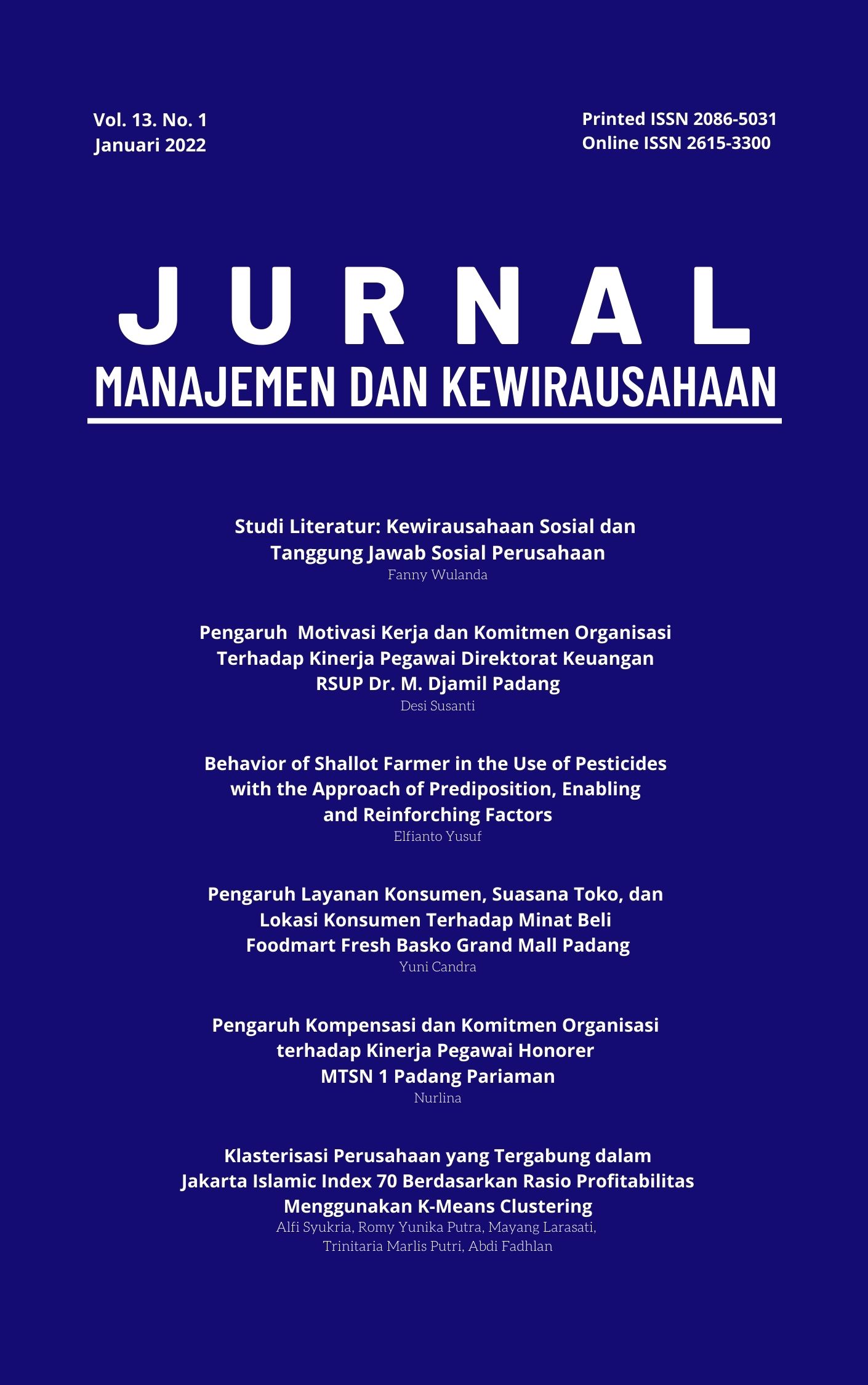Klasterisasi Perusahaan yang Tergabung dalam Jakarta Islamic Index 70 Berdasarkan Rasio Profitabilitas Menggunakan K-Means Clustering
Abstract
One of the main roles of companies is to encourage economic development because companies can absord labor and optimize the use of resources, thus become an important aspect of the economic system. The process of evaluating the performance of a company can be seen from the company's financial ratios, one of which is the profitability ratio. The profitability ratios used in this study are Gross Profit Margin (GPM), Net Profit Margin (NPM), Return On Assets (ROA), and Return On Equity (ROE). The method that has been used was a quantitative method using k-means clustering analysis. The data that has been used was secondary data with the observation unit of 66 companies that are members of the Jakarta Islamic Index (JII70). The results showed that the optimal number of clusters were 3 clusters. Cluster 1 is a company with healthy profitability ratio category consist of 14 companies. Cluster 2 is a company with less healthy profitability ratio category consist of 38 companies. Cluster 3 is a company with unhealthy profitability ratio category consist of 14 companies
References
Johnson, R., & Wichern, D. (2007). Applied Multivariate Statistical Analysis (6 ed.). New Jersey: Prentice Hall.
Kasmir. (2015). Analisis Laporan Keuangan. Jakarta: Rajawali Grafindo Persada.
Rudianto. (2013). Akuntansi Manajemen. Jakarta: PT. Glora Aksara Pratama.
Sanjaya, S., & Rizky, M. F. (2018, Juli - Desember). Analisis Profitabilitas dalam menilai kinerja keuangan pada PT. Taspen (Persero) Medan. Kitabah, 2(2), 277-293.

This work is licensed under a Creative Commons Attribution-ShareAlike 4.0 International License.
Click for JMK's Copyright and License Statement



